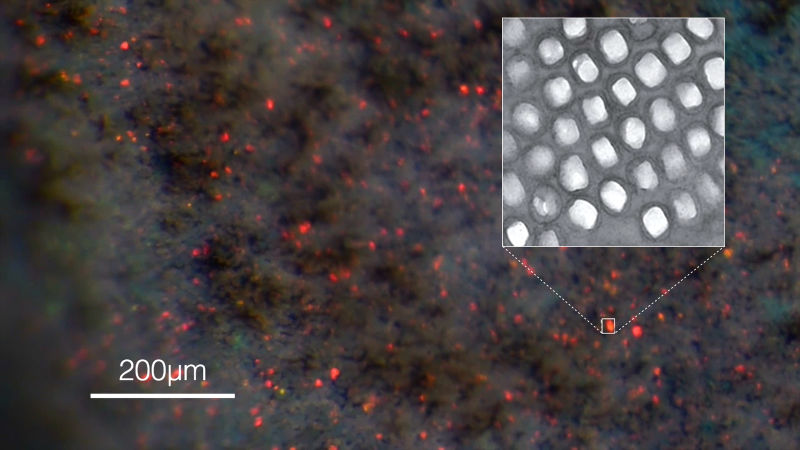Nature's Mood Rings: How Chameleons Really Change Color
Chameleons are some of the most brilliantly colored animals on the planet. But how did they evolve the ability to change color?
Scientists used to believe that chameleons changed color by spreading out pigments in their skin, much like octopuses or squid do.
The top layer of chameleon skin – called the epidermis – contains yellow pigment cells called xanthophores, and red pigment cells called erythrophores. But the amount of pigment in the cells stays the same, even when the chameleon changes color.
Earlier this year, Michel Milinkovitch, an evolutionary geneticist and biophysicist in the Department of Genetics and Evolution at the University of Geneva and a team of researchers discovered that Panther chameleons change color using a crystalline structure beneath their top layer of skin.
Just beneath the chameleon’s skin is a layer of cells called iridophores. These cells contain microscopic salt crystals, which are arranged in a three-dimensional pattern like oranges stacked on a fruit stand.
When light hits the crystals, some wavelengths are absorbed and some are reflected. The result, to our eyes, is the beautiful rainbow of colors on the chameleon’s skin. But what we’re actually seeing is light that is bouncing off of these tiny crystals. What we perceive as green, for example, is blue wavelengths of light being reflected off the crystals and through the layer of yellow xanthophore cells in the chameleon’s epidermis. The result is bright green skin that contains no green pigment!
The brilliant blue wings of the Morpho butterfly,
a colorful species found in the tropics, have a similar structure tko the tiny crystals in chameleons. But unlike Morhpo butterflies, chameleons have evolved the ability to move the structure. When chameleons change color, they’re actually tuning the distance between the salt crystals, which changes the color of light reflected.

Chameleons have a second layer of iridiophore cells just beneath the first. The crystals in that layer are larger and reflect light waves in the infrared wavelengths. This suggests that chameleons are also changing colors to regulate their temperature, according to Milinkovitch. Chameleons are cold-blooded and heat their bodies with the warmth of the sun.
But there is another possibility that is hard to prove. Like many animals, chameleons can see a wider range of light than humans can, including ultraviolet light. That means the color changes that we can see are just the beginning. In fact, chameleons have developed a whole language of color that extends far beyond what we can understand.
It turns out our understanding of why chameleons change color was incomplete as well.
Scientists once thought that chameleons color-changing abilities allowed them to better camouflage themselves. Most species of chameleons live high in the forest canopy and their various shades of green provide natural camouflage. Even their movement provides camouflage – they dance around to mimic leaves blowing in the wind.
In fact, chameleons change color primarily to communicate with each other, as though they were living mood rings. Males will warn each other about their territory and females will change color to let males know whether they’re interested in breeding.
At around the same time as Milinkovitch published his findings, scientists at UC Berkeley were putting the final touches on a color-changing prototype they likened to synthetic chameleon skin.
The group of electrical engineers, led by Connie Chang-Hasnain, etched a one-dimensional array into a thin silicon film. At the microscopic level, the array looks like it’s made of tiny ribbons laid in perfectly straight rows. The ribbons of silicon work in much the same way as the crystals in chameleon skin – they reflect a particular wavelength of light depending on how widely spaced they are.
The scientists stuck the array onto flexible plastic. When the plastic is stretched, the spacing between the ribbons changes and the design changes color. They began with a flower design, but the patterns have become increasingly complex and now include a chameleon — a nod to the creature that helped inspire the idea.
The array reflects up to 83 percent of the light that hits it. The applications for a color-changing array are enormous, according to Chang-Hasnain, including biosensors, energy efficient electronic displays and even sensors that would change color to warn of structural failure on a bridge or airplane wing.